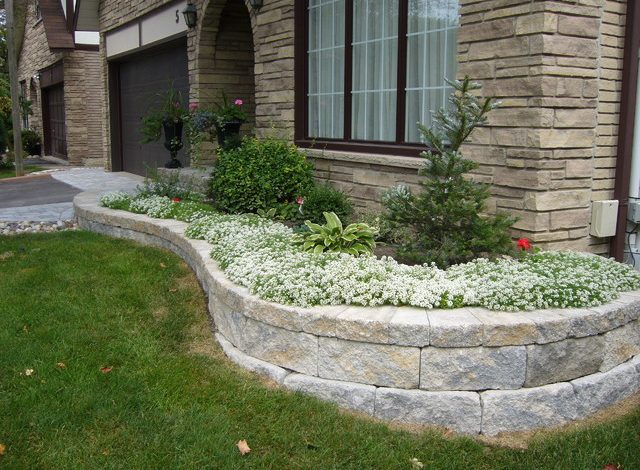
You must consider how water drains from your property when building a retaining wall. You don’t want water to pool or flow in areas you don’t like. To avoid this, you should plan around the retaining wall, so that it directs water away from the house. This is especially important for rural areas, where water rights must be protected.
Privacy can be achieved by adding a fence to a wall.
A common landscaping feature is to add a fence to a existing retaining wall. You can install it as a face or surface mounted fence or use an embedded or post-in system. The type of fence you choose will depend on the size, height, and strength of the retaining walls. Before you start, make sure to check local building codes.
Adding a fence to a retaining wall offers many benefits. A retaining walls protects your property from erosion, and it can also provide privacy. The fence should be placed at least three feet behind the besser blocks adelaide of the retaining wall. This will ensure that the fence is stable and can withstand any pressure from its foundation. International building codes may require that retaining walls greater than 30 inches high have a fence.
Privacy fences are a great way of creating privacy. It can be made from wood, stone, or a trellis. You can choose the best style for your yard from a variety of materials, including some that are both natural and stain-resistant. A retaining wall can also create a stylish barrier, and you can accent it with attractive landscaping elements. A retaining wall also provides low-maintenance privacy and helps prevent soil erosion on a hilly area.
If you want your new fence to create privacy for you and your neighbors, you should build it two to three feet away from the wall. The wall should be strong enough support the fence. Before you start building your fence or retaining wall, it is important to consider their height and design. Fences are usually three to four feet high, but privacy reasons may require them to be built lower.
A retaining wall can be added to a sloped yard
Before adding the retaining wall, it is important to level the area. Use a four-foot carpenter’s level to check for unevenness in the gravel layer. If there are any discrepancies, the wall will be lopsided. Also stack the blocks with a slight slope backwards.
When building a retaining wall, make sure the trench is level and at least 6 inches deep. It should also be deep enough to support half of the bottom wall block. If you are building a wall with more height, you should use deadmen anchors, which are 6-foot-long tiebacks buried into the hillside.
The first step in building a retaining wall on a slope is to dig a base trench. This trench is usually 24 inches in width. The depth of the trench will depend on the height of the wall and the thickness of the buried materials. An 18-inch base trench is acceptable for walls less than 4 feet high.
If your yard is on a slope, adding a retaining wall can make it look great and improve the overall landscaping services adelaide of your yard. A retaining wall can transform a sloped yard into a terrace where different kinds of plants can be planted at different levels. A retaining wall can also be used to add a fire feature. It will be easier to make a cozy fire pit on top of a retaining wall if you have an outdoor fireplace.
You can also manage water runoff by constructing retaining walls. They help slow the flow of water downhill and can be used in conjunction with rain gardens and other water management techniques. A retaining wall can help reduce erosion and make your garden a focal point. Although they are affordable, they require some maintenance. To improve the appearance of your sloped yard, you can use a variety materials to build a wall.
Choosing the right material for a retaining wall
When building a sloped wall retaining wall, there are many factors to consider. These include the materials used and the slope. You will get the best results by choosing the right materials. First, measure the slope and area where you are building. This will help you choose the right materials. Then, you’ll want to create a base layer of gravel or sand. This foundation should be leveled so that the retaining wall can be built on it. Once you’ve done that, it’s time to lay the first course of blocks. You’ll need to ensure that the blocks are level with each other and with the base layer.
The materials used for retaining walls vary greatly. Some are made of wood, while others are made of cinder blocks. Wood retaining walls can be a durable option, but can easily rot in humid or moist areas. Poured concrete can also crack if there are extreme temperature swings, which can decrease its life span.
The height and type of retaining wall will affect the type of material you choose. Taller walls are more difficult to build and maintain than those that are shorter. Walls four feet high or higher need a professional to construct correctly. You can also consider building multiple tiered walls to retain slopes. This will give your walls a stepped appearance. You can also choose from stone bricks and stone blocks.
Before you start choosing retaining wall blocks, compact the ground. Then, lay them out in staggered courses. Once they are set, you’ll need to step back and latch them onto the retained soil. This will prevent water from leaking down the slope and into your house. You should also ensure that you have adequate drainage for the soil around the retaining wall.
Construction of a retaining wall along a slope
The first step in building a retaining wall on a slope is to level the ground and prepare a porous base. This will allow for drainage and make it easier for blocks to be laid. Start by spreading a base layer of gravel or sand about 2 inches deep. Next, place the first row retaining blocks on top of the base layer. Press the blocks down firmly but not so hard that the base layer shifts.
Once the ground is leveled, it’s time to start building your retaining walls. To check the alignment of the first course, use a leveling tool. Then, start building the second layer of the wall. A running bond pattern will make the wall look better. Alternating blocks will make the wall more stable and attractive than stacked blocks.
You must obtain the permits required to build a freestanding wall. These permits will specify the maximum height of the structure and property lines. You can always hire a landscaper if you have any questions. Remember to check the location of underground utility lines before you start building your retaining wall.
Next, lay down a layer of sand and gravel. This should be at least two inches deep. The foundation must be level so that the walls can be built upon it. There are also retaining wall blocks that can be used, which are easily available. They can be purchased at Building Products Corp.
Retaining walls can be used to make steep areas more usable. They can also be a beautiful accent for landscaping. Retaining walls help prevent erosion and are affordable to install.
Designing a retaining wall
The first step in designing a sloped retaining wall is to level the foundation of the wall. The base for a retaining wall should be at least eight inches deep and about one foot above the ground. This is necessary to prevent frost heaving. Next, make a trench about one-eighth the height of your wall.
A retaining wall will keep the soil in place and prevent it being washed away. A retaining wall may be constructed in small sections or one tall wall. It doesn’t matter what design you choose, it is important that you determine the slope’s steepness as well as the location of your retaining wall.
You can make the wall from bricks or concrete blocks, or you can use natural stone veneer. These materials will enhance the garden’s depth and blend well with the surrounding landscape. For added beauty, add plants to the retaining walls if you are adding rockeries to your yard.
The lateral earth pressure is another factor to consider when designing a sloped wall. The lateral pressure will be zero at the top of the wall, and will increase proportionally to the depth. If this pressure is not addressed, the wall will push forward and may overturn. Hydrostatic pressure is caused by groundwater and acts at one third of its depth.
The cost and type of wall will depend on the needs of the client. A structural concrete wall will be more expensive than a dry-laid concrete wall. The latter gives a great finish, but is not as stable.






